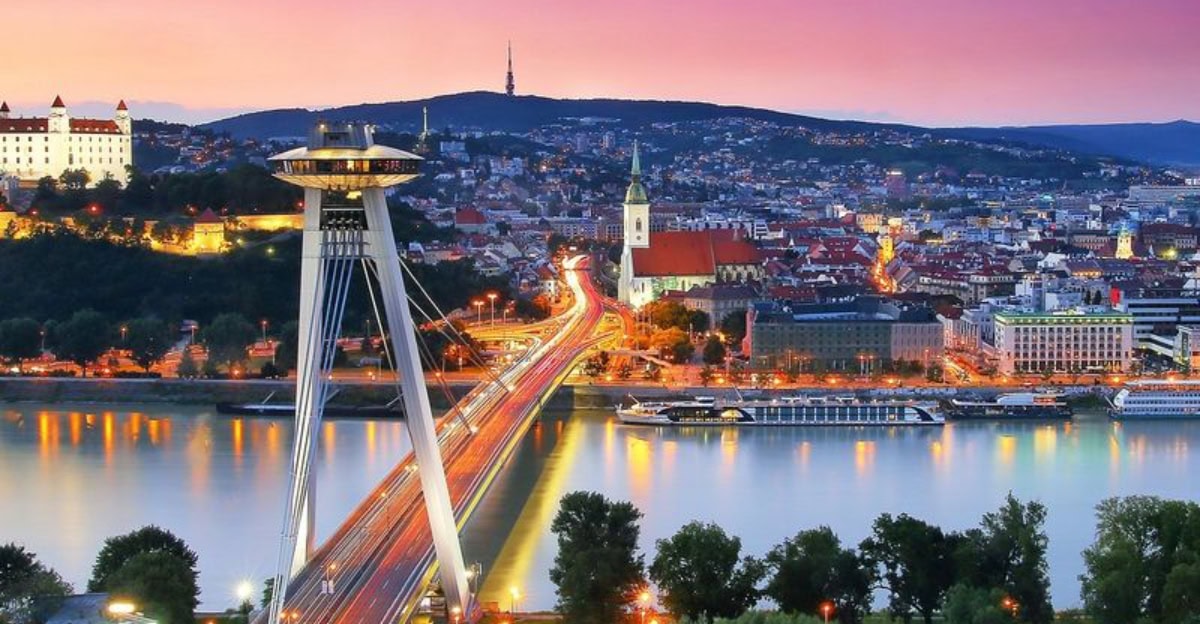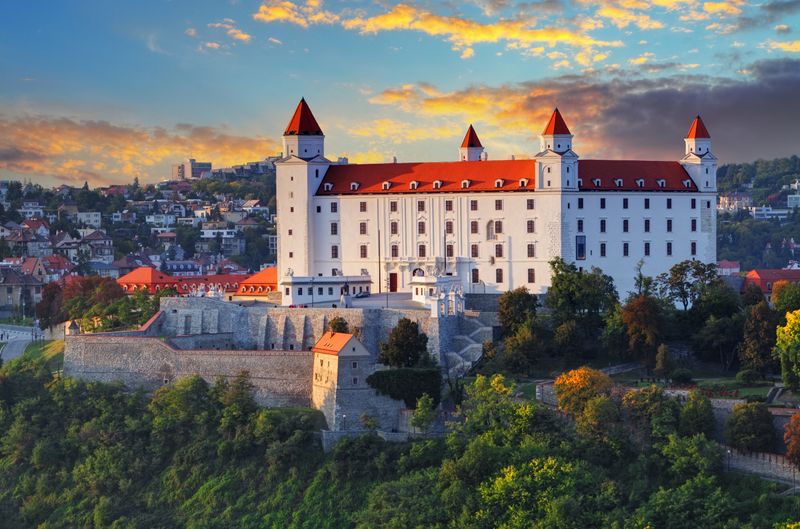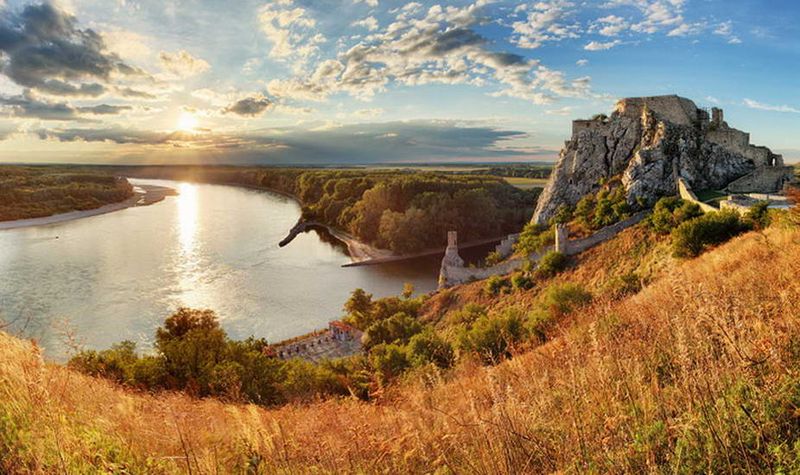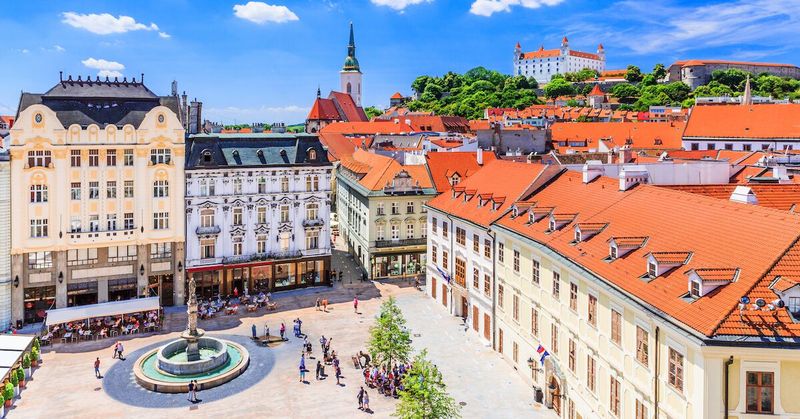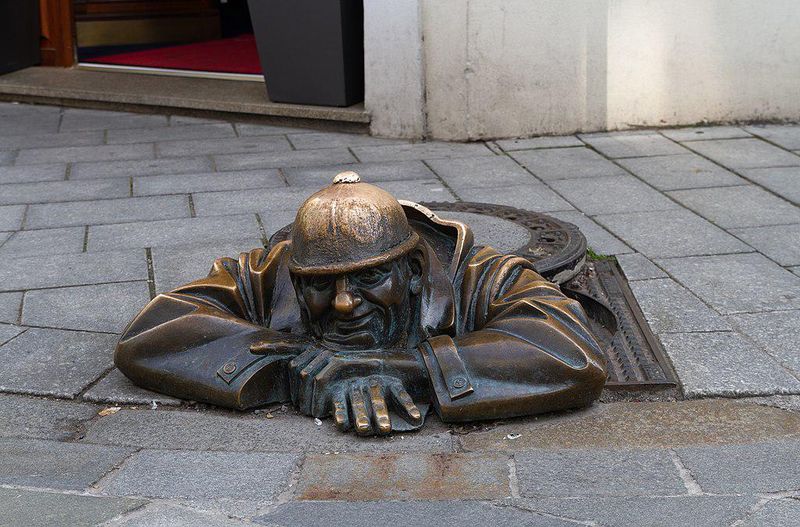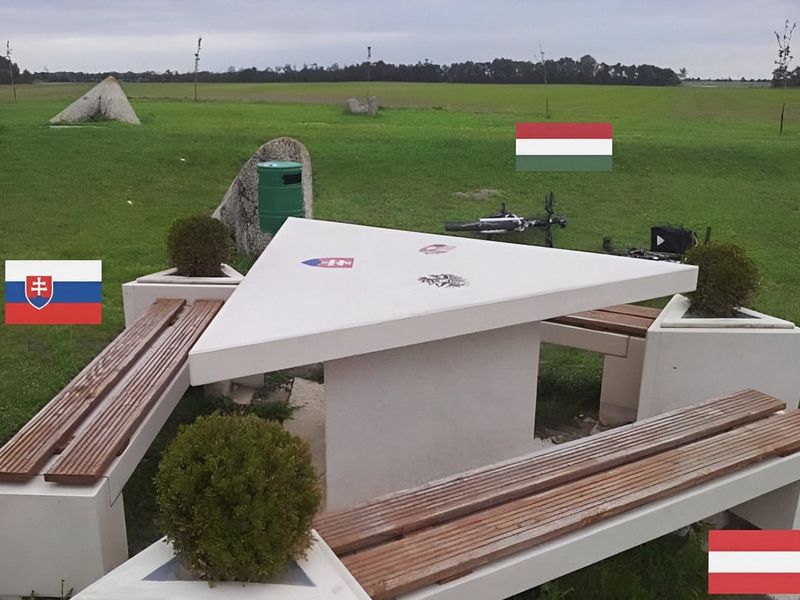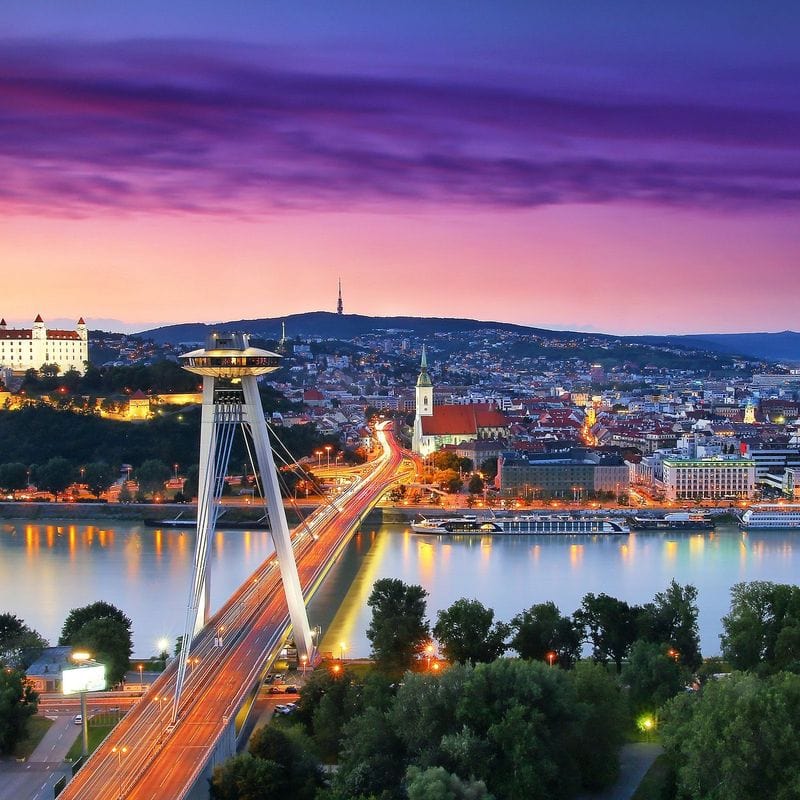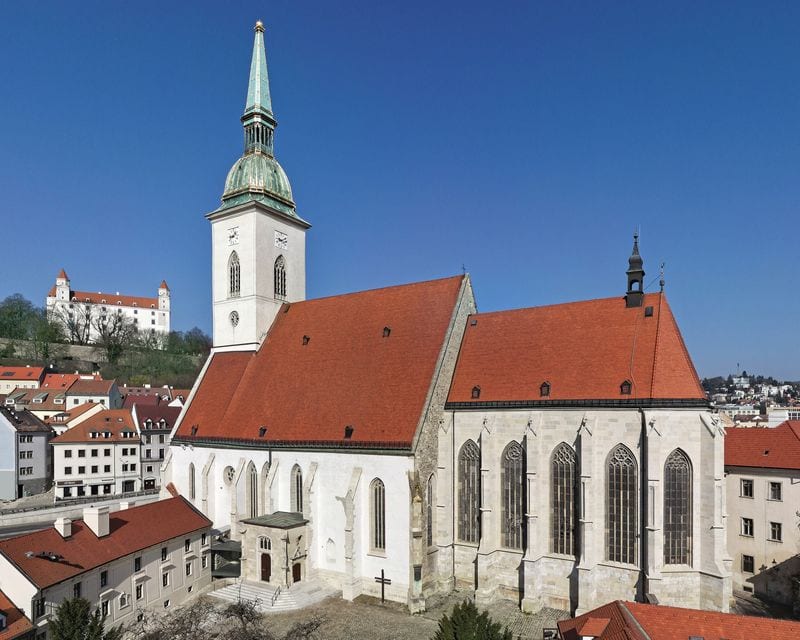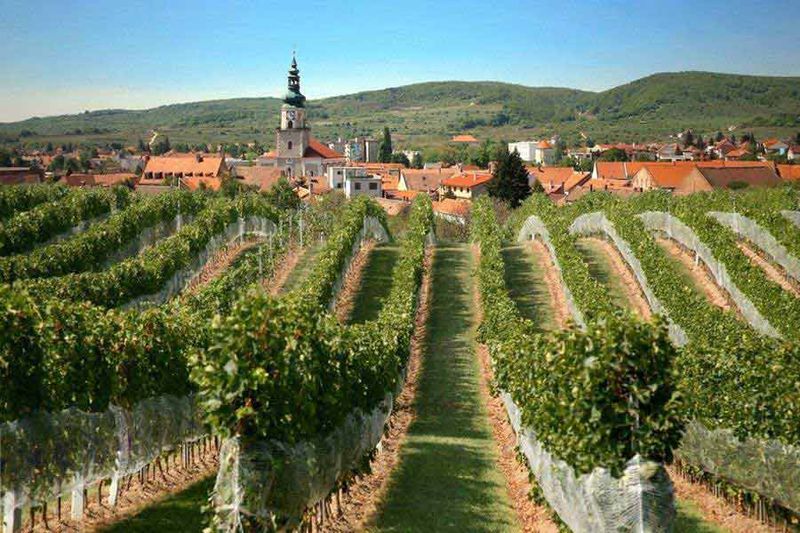Bratislava might be Europe’s best-kept secret, but not for much longer. This charming Slovak capital sits like a jewel on the Danube River, where medieval castles rise from hilltops and cobblestone streets wind through colorful Old Town squares. With tourism numbers hitting record highs, visitors are discovering what locals have always known – this fairytale city offers royal history, stunning architecture, and unforgettable experiences all within walking distance.
1. Marvel at the Crown Jewel – Bratislava Castle
Standing proudly above the Danube for over a thousand years, Bratislava Castle looks like something straight out of a storybook. Four distinctive white towers mark each corner of this rectangular fortress, creating the most photographed silhouette in Slovakia.
Inside, the National Museum showcases treasures from Slovak history, while the castle grounds offer breathtaking panoramic views. The climb up Castle Hill takes about 15 minutes, but the reward is worth every step.
Pro tip: Visit during golden hour for the most magical photos, when the castle glows against the sunset sky.
2. Discover a Kingdom of Nearby Castles
Beyond the main castle, the Bratislava region hides dozens of fairytale fortresses waiting to be explored. Devín Castle ruins perch dramatically at the meeting point of two rivers, offering some of the most romantic sunset views in Central Europe.
Červený Kameň Castle showcases Renaissance elegance, while Bojnice Castle (a short trip away) looks like it inspired Disney’s Sleeping Beauty Castle. Each fortress tells its own legend through ancient stones and restored chambers.
Many castles offer guided tours in English, and several host medieval festivals during summer months that bring history to life.
3. Stroll Along the Legendary Danube Promenade
Few capitals let you sip coffee literally beside Europe’s most famous river, but Bratislava’s Danube promenade makes this dream a reality. Riverside cafés serve local pastries while cyclists and joggers share the peaceful waterfront paths.
River cruise boats dock regularly, offering everything from one-hour sightseeing trips to multi-day journeys to Vienna and Budapest. The promenade connects several parks, creating green spaces perfect for picnics or evening walks.
Watch for the cute river trams that shuttle between different districts, and don’t miss the floating restaurants that serve fresh fish caught from these historic waters.
4. Experience Record-Breaking Tourism Growth
Bratislava’s tourism numbers have exploded in recent years, with visitor arrivals increasing by over 40% since 2015. This surge stems from the city’s perfect location for river cruises and its reputation as an affordable alternative to pricier capitals nearby.
Weekend city breaks have become especially popular, with direct flights now connecting Bratislava to major European cities. The tourism boom has sparked a renaissance in local restaurants, boutique hotels, and cultural attractions.
Book accommodations early, especially during summer months and Christmas markets season, when the fairytale atmosphere attracts visitors from around the world seeking authentic Central European charm.
5. Explore One of Europe’s Most Walkable Capitals
Measuring just 367 square kilometers, Bratislava proves that good things come in small packages. You can walk from the castle to the Old Town in under 10 minutes, and cross the entire historic center in less than half an hour.
This compact size means no time wasted on lengthy commutes between attractions. Everything flows naturally from one charming district to another, making spontaneous discoveries part of the adventure.
The city’s flat terrain and pedestrian-friendly streets make walking a pleasure rather than a chore, perfect for travelers who want to experience maximum culture with minimum effort.
6. Wander Through a Living Fairytale – The Medieval Old Town
Bratislava’s Old Town feels like stepping inside a children’s storybook, where pastel-colored baroque buildings line narrow cobblestone alleys. Hidden courtyards reveal charming cafés, while quirky bronze statues surprise visitors around every corner.
The famous Čumil statue pokes his head out of a manhole cover, while Napoleon’s soldier leans on a bench for selfies. These whimsical touches add playfulness to the serious business of history.
Gothic churches stand beside Renaissance palaces, creating an architectural timeline you can explore in an afternoon. Street musicians often perform in the main squares, adding soundtrack to your fairytale adventure.
7. Visit the World’s Only Three-Country Capital Border
Geography buffs, rejoice! Bratislava holds the unique distinction of being the world’s only capital city that borders two other countries. Austria lies just across the Danube, while Hungary stretches to the south and east.
This extraordinary location means you can literally have breakfast in Slovakia, lunch in Austria, and dinner in Hungary – all within a few hours. Border crossings take minutes by car or train, opening up incredible day-trip possibilities.
The trilingual culture creates a fascinating blend of influences in food, architecture, and local customs that you won’t find anywhere else in Europe.
8. Ascend the Futuristic UFO Observation Tower
Rising 95 meters above the Danube on the SNP Bridge, the UFO Tower looks like it landed from another planet. This space-age structure offers the most spectacular 360-degree views in the entire city, stretching to Austria and Hungary on clear days.
The observation deck features interactive displays explaining the panorama below, while the restaurant serves modern Slovak cuisine with unbeatable views. High-speed elevators whisk visitors to the top in just 45 seconds.
Evening visits provide magical cityscape views as lights twinkle across three countries, making this futuristic landmark a perfect romantic finale to any Bratislava adventure.
9. Step Into Royal History at St. Martin’s Cathedral
For nearly 300 years, St. Martin’s Cathedral witnessed the coronation of Hungarian kings and queens, including the famous Maria Theresa. The Gothic spires still display a replica of the Hungarian royal crown, weighing 300 kilograms and covered in gold.
Inside, stunning stained glass windows tell stories of royal ceremonies, while the crypt holds remains of medieval nobles. The cathedral’s acoustics make it a popular venue for classical concerts.
Construction began in the 13th century, and the building survived Ottoman invasions, Habsburg rule, and two world wars while maintaining its sacred atmosphere and royal dignity.
10. Balance Modern Cool with Old World Charm
Bratislava masterfully blends cutting-edge contemporary culture with centuries-old traditions. Trendy craft breweries occupy medieval cellars, while modern art galleries showcase local talent in baroque palaces.
Hip coffee shops serve specialty roasts alongside traditional Slovak pastries, creating the perfect fusion of old and new. Young entrepreneurs have transformed forgotten spaces into creative hubs without destroying historical character.
The city’s tech startup scene thrives in renovated historical buildings, proving that innovation and preservation can coexist beautifully. This balance attracts both history lovers and modern travelers seeking authentic experiences with contemporary comfort.
11. Venture Into Ancient Wine Country
Just 30 minutes from Bratislava’s city center lies one of Europe’s oldest wine regions, where Romans first planted vineyards over 2,000 years ago. The Small Carpathian Wine Route winds through picturesque villages surrounded by rolling vineyard hills.
Local wineries specialize in crisp Rieslings and Grüner Veltliners that pair perfectly with traditional Slovak cuisine. Many cellars offer tastings in atmospheric underground chambers carved from rock centuries ago.
Wine festivals throughout the harvest season celebrate this ancient tradition with folk music, regional food, and plenty of opportunities to sample bottles you can’t find anywhere else in the world.
